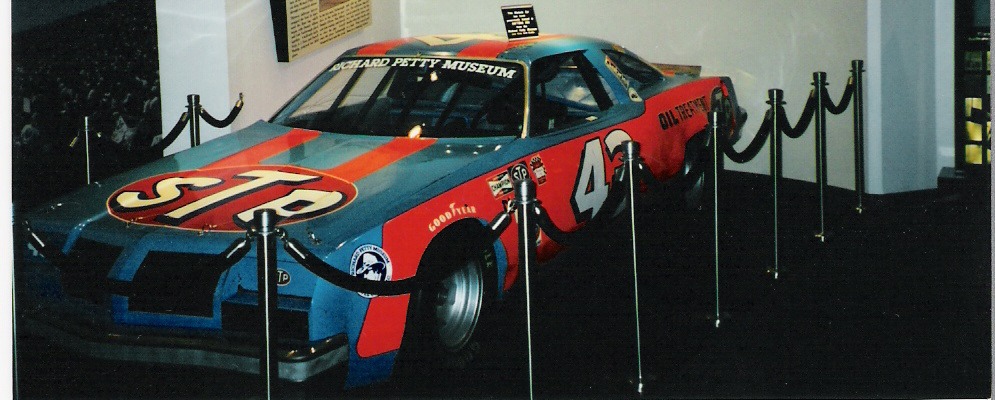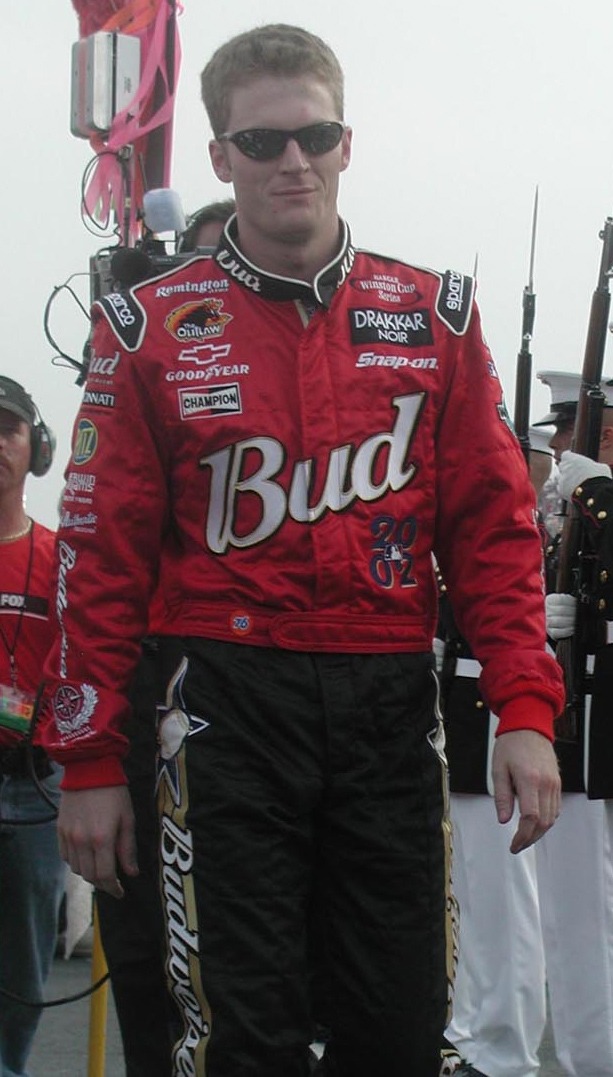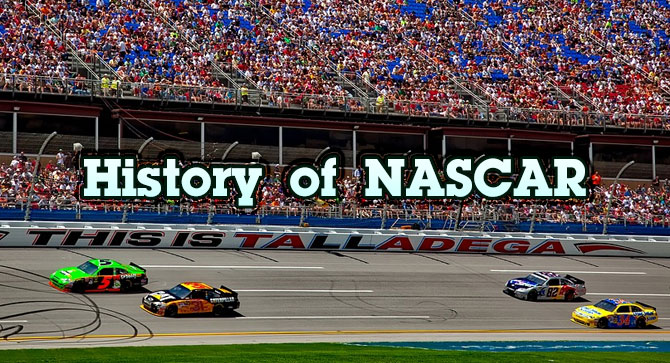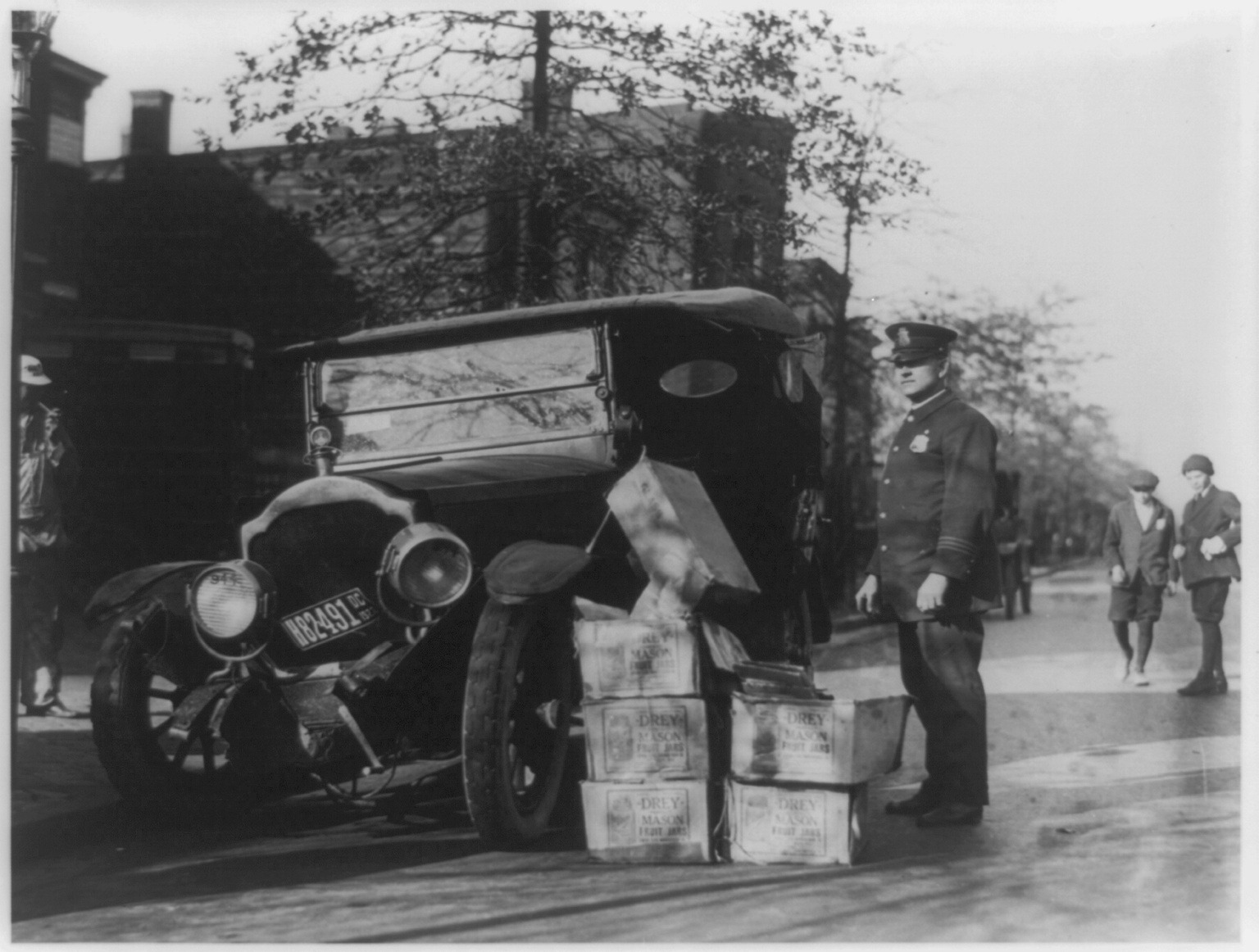The National Association for Stock Car Auto Racing (NASCAR) holds a prestigious position in the world of professional sports, rivaling the National Football League in fanbase and viewership within the United States. As a premier global motorsports organization, NASCAR orchestrates major stock-car racing events like the Monster Energy NASCAR Cup Series, Camping World Truck Series, and the Xfinity Series, sanctioning over 1,500 races across 39 US states and beyond.
Early Beginnings: From Prohibition to Racing
The Era of Prohibition
The roots of NASCAR are deeply intertwined with a rather unexpected chapter in American history: the Prohibition era of the 1920s and 1930s. During this period, the sale of alcoholic beverages was outlawed across the United States, leading to the rise of an illicit whiskey trade. This clandestine business required the discreet and rapid transportation of goods, often leading to high-speed car chases as bootleggers tried to evade law enforcement. These high-stakes pursuits through winding roads and makeshift paths unwittingly laid the foundations for stock car racing. The bootleggers’ vehicles, heavily modified for speed and agility, became the prototypes for the first stock cars used in racing.
The Birth of a Competitive Spirit
As these illegal runs became more frequent, a spirit of competition arose among the bootleggers. It was not just about evading the authorities anymore; it was also about who could do it the fastest. These impromptu races, often held under the radar and spoken of in hushed tones, were driven by bragging rights and the sheer thrill of the chase. The skills honed during these high-speed adventures – quick reflexes, car handling, and tactical driving – would soon become invaluable in the emerging world of stock car racing.
Transition to Organized Racing
With the end of Prohibition in 1933, the need for bootlegging diminished, but the love for speed and racing that it had ignited remained. Many of these former bootleggers, now experienced drivers, began to look for new avenues to showcase their driving skills. This shift coincided with a growing public interest in automobile racing. Informal races started to gain popularity, drawing crowds eager to witness the thrilling spectacle of cars racing at breakneck speeds.
The Role of Economic and Social Factors
The Great Depression and the subsequent economic hardship of the 1930s played a significant role in this transition. For many, racing offered an escape from the grim realities of the time, a place where they could experience excitement and adventure. It also provided an opportunity for drivers and mechanics to earn a living and gain recognition in an era of scarcity and limited opportunities.
The Emergence of Racing Icons
This era saw the emergence of early racing icons, men who would become legends in the racing world. Their daring driving, innovative car modifications, and charismatic personalities helped to shape the nascent sport and captivate the imaginations of early racing fans. Their legacy would lay the groundwork for the formalization of stock car racing and the eventual establishment of NASCAR.
The Cultural Impact of Early Racing
These early races were more than just competitions; they were cultural events that brought together communities. They fostered a sense of camaraderie and shared excitement, contributing to the development of a unique racing culture that would become a defining aspect of NASCAR. This culture, rooted in the early days of Prohibition-era bootlegging and the struggle for survival during the Great Depression, would come to define the spirit of NASCAR, blending the thrill of racing with a deep sense of history and tradition.
Post-War Popularity and the Need for Structure
The post-war popularity of stock car racing and the subsequent need for structure were critical in shaping the future of the sport. The challenges of disorganization, safety, and exploitation were met with a visionary solution that led to the establishment of NASCAR, a governing body that would come to define the world of professional stock car racing. The legacy of this period is a testament to the resilience and adaptability of a sport that rose from humble beginnings to become a cornerstone of American motorsports culture.
The Post-War Boom in Stock Car Racing
In the aftermath of World War II, the United States experienced a period of significant cultural and economic change, which had a profound impact on the landscape of leisure activities, including motorsports. The end of the war brought with it a renewed interest in recreational pursuits, and stock car racing, with its thrilling races and daredevil drivers, quickly grew in popularity. The country’s newfound prosperity meant more people could afford cars, and this accessibility translated into a surge in both the number of drivers participating in races and the size of the audiences these races attracted.
Challenges of a Growing Sport
As stock car racing’s popularity soared, it began to face unique challenges. Racing tracks across the country were drawing increasingly larger crowds and more drivers, yet there was a glaring absence of uniformity and organization. Each track operated under its own set of rules, creating confusion and often leading to disputes. Moreover, the lack of standardized regulations made races unpredictable and, at times, unsafe.
The Issue of Promoter Exploitation
One of the most pressing issues was the exploitation of drivers by unscrupulous promoters. Many drivers found themselves victimized by these promoters, who would often pocket the prize money, leaving the drivers unpaid. This not only caused financial strain on the drivers but also undermined the integrity of the sport.
Safety Concerns and Inadequate Facilities
As more people flocked to races, some tracks found themselves unable to cope with the burgeoning crowds. This led to safety concerns, both for the drivers and the spectators. The tracks, often makeshift and poorly constructed, were not equipped to handle the large numbers of racing enthusiasts, leading to hazardous conditions.
The Vision of William France Sr.
It was against this backdrop of chaos and disorganization that William France Sr., a significant figure in the racing world who had been managing the Daytona course since 1938, saw an opportunity to create order. France, who had moved to Daytona, Florida, from Washington, D.C., in 1935, was not just a promoter but also a racer himself. His experiences as a driver and promoter had given him a deep understanding of the challenges and potential of stock car racing.
The Historic Meeting at the Streamline Hotel
Recognizing the need for a governing body to bring structure and standardization to the sport, France organized a historic meeting at the Streamline Hotel in Daytona Beach on December 14, 1947. The meeting brought together drivers, car owners, mechanics, and promoters from all over the country. This assembly marked a pivotal moment in the history of stock car racing, as it was here that the foundations for the National Association for Stock Car Auto Racing (NASCAR) were laid.
The Birth of NASCAR
The discussions and agreements made at the Streamline Hotel were crucial in addressing the various issues plaguing the sport. France’s leadership and vision were instrumental in forming an organized, standardized set of rules for stock car racing. Two months after this landmark meeting, NASCAR was officially established, marking the beginning of a new era in the sport. The first NASCAR-sanctioned race was held on February 15, 1948, in Daytona Beach, signaling the start of a structured, professionally managed form of racing that would grow to international prominence.
Evolving Divisions and Historic Races
The Initial NASCAR Divisions
In its early years, NASCAR introduced several racing divisions, each designed to cater to different aspects of stock car racing. The original divisions included the Modified, Strictly Stock, and Roadster categories. The Modified division featured cars that had been altered for higher performance, while the Strictly Stock division was intended for unmodified, factory-standard vehicles. The Roadster division, which consisted of open-top cars, was short-lived due to its lack of popularity among fans.
Transition and Growth of Divisions
The Roadster division’s quick dissolution underscored NASCAR’s responsiveness to fan preferences, an attribute that would be vital in its growth. The Modified division, showcasing high-speed and highly modified cars, quickly became a fan favorite and evolved into what is known today as the Whelen Modified Tour. This division continues to represent the roots of NASCAR and its connection to the early days of stock car racing.
The Strictly Stock Division’s Evolution
The Strictly Stock Division, pivotal in NASCAR’s history, underwent significant changes. It began with a focus on racing unmodified, factory-model cars, emphasizing the skill of the driver over the mechanics of the vehicle. However, as the sport evolved, it became clear that modifications were necessary for performance and safety. By the mid-1960s, these modifications were allowed, marking a shift towards what would become modern stock car racing. This division, renamed the Grand National in the 1950s, was the precursor to today’s premier series, the NASCAR Cup Series.
Historic Races and Milestones
One of the most noteworthy races in NASCAR’s early history was the first Strictly Stock race at Charlotte Speedway in 1949. This race was not only a competition but a demonstration of the potential of stock car racing as a professional sport. The race’s dramatic conclusion, with the initial winner Glenn Dunaway being disqualified for vehicle modifications, leading to Jim Roper’s victory, is a pivotal moment in NASCAR’s narrative, emphasizing the importance of regulations in the sport.
The Introduction of Asphalt Speedway Racing
The 1950s marked another significant evolution in NASCAR with the introduction of asphalt speedway racing. The Darlington International Raceway became the first asphalt track to host a NASCAR event, a milestone that heralded a new era in the sport. This move to asphalt tracks allowed for higher speeds and more consistent racing conditions, contributing to the growing popularity of the sport.
The 1970s: A New Era
Under William France Jr.’s leadership from 1972, NASCAR underwent significant changes, including securing its first title sponsor, the R.J. Reynolds Tobacco Company. This partnership led to renaming the Grand National Series as the Winston Cup Series and the introduction of the Winston West Series and Dodge Weekly Series.
The Daytona 500: An Iconic Race
Perhaps the most iconic event in NASCAR’s history is the Daytona 500, first held in 1959. The race’s inaugural run at the Daytona International Speedway, a 2.5-mile-long track, was a landmark event that showcased the sport’s grandeur and competitiveness. The dramatic finish of the 1959 race, with Lee Petty declared the winner 61 hours after the race due to an extremely close finish, is etched in NASCAR lore. This race not only solidified the Daytona 500’s status as “The Great American Race” but also highlighted the importance of precision and fairness in the sport.

Emergence of Racing Legends
As NASCAR grew, so did the legends within it. Drivers like Richard Petty, David Pearson, and others emerged as icons, captivating fans with their skill and charisma. Races like the 1976 Daytona 500, where Richard Petty and David Pearson crashed just before the finish line, with Pearson limping his car to victory, became legendary moments that defined the sport’s competitive spirit and its capacity for dramatic, unforgettable finishes.
Growing Popularity and Expansion
Strategic Marketing and Sponsorships
The 1970s and 1980s saw NASCAR’s strategic efforts in marketing and securing sponsorships come to fruition. Corporate sponsorships brought in new revenue streams and increased the sport’s visibility. These sponsorships also led to technological advancements in the cars, as companies invested in research and development to improve performance and safety.
NASCAR’s Media Boom
Television played a pivotal role in NASCAR’s expansion. The broadcast of races brought the excitement of NASCAR into living rooms across America, creating a new type of sports entertainment. The first nationally televised race in 1979, the Daytona 500, was a significant milestone. It was the first 500-mile race broadcast in its entirety, and the dramatic finish captured the nation’s attention, proving that NASCAR could be a major player in the sports broadcasting world.
Moving Beyond the United States
By the late 2000s, NASCAR began to expand internationally, holding races in Canada, Mexico, and even across the Atlantic. This global expansion was a testament to the universal appeal of the sport, transcending cultural and geographical boundaries.
Technological Innovations and Evolving Practices
As NASCAR grew, so did its approach to racing. Technological innovations in car design, safety equipment, and racing strategies evolved continuously. These advancements not only made the sport safer for drivers but also more engaging for fans, with closer and more competitive races.
Recent Developments
These recent developments in NASCAR highlight the organization’s commitment to progress, whether through technological innovation, environmental responsibility, or social inclusivity. By adapting to changing times and broadening its appeal, NASCAR continues to solidify its place not just in the world of motorsports, but also in the wider realm of global sports entertainment.
Technological Advancements and Modernization
In recent years, NASCAR has embraced cutting-edge technology to enhance both the racing experience and its appeal to a modern audience. This includes the adoption of advanced safety features in cars, the use of digital platforms for fan engagement, and the integration of social media strategies to reach a broader, more diverse audience. Innovations in race broadcasting, such as in-car cameras and enhanced graphics, have made watching NASCAR more immersive and interactive.
Environmental Consciousness and Sustainability Efforts
NASCAR has also turned its attention to environmental sustainability, recognizing the importance of being responsible stewards of the planet. This shift has led to initiatives like using biofuels to reduce the carbon footprint of races and implementing recycling programs at race tracks. These efforts not only contribute to environmental protection but also resonate with a new generation of environmentally conscious fans.
The Impact of COVID-19 and Adaptations
The COVID-19 pandemic brought unprecedented challenges to the sports world, and NASCAR was no exception. The organization had to adapt quickly, introducing virtual races during lockdown periods and implementing strict safety protocols to resume physical races. These adaptations demonstrated NASCAR’s agility and commitment to providing continuous entertainment to its fans, even in difficult times.
Diversity and Inclusion Initiatives
Recognizing the need for greater diversity in motorsports, NASCAR has implemented several initiatives to promote inclusivity within the sport. This includes efforts to support and elevate minority and female drivers, as well as programs aimed at increasing diversity among team members and staff. These initiatives reflect NASCAR’s commitment to creating a more inclusive environment for all participants and fans.
Evolution of Sponsorships and Partnerships
The landscape of sponsorships in NASCAR has evolved, with an increasing number of partnerships extending beyond traditional automotive and energy companies. This diversification of sponsorships reflects the broadening appeal of NASCAR and its ability to attract partners from various industries.
The Next Generation Car
A significant development in recent years is the introduction of the Next Gen car, set to debut in the 2022 season. This new car model promises improved performance, greater safety features, and a design that’s more closely aligned with consumer vehicles, potentially attracting a new audience to the sport.
Engaging the Next Generation of Fans
NASCAR is actively working to engage younger audiences through various channels. This includes educational initiatives, esports, and interactive fan experiences, both at the track and online. By focusing on the younger demographic, NASCAR aims to build a new generation of loyal fans.

Interesting Facts about NASCAR
Conclusion
From its bootlegging origins to its current status as a global motorsports powerhouse, NASCAR’s journey is a testament to the enduring allure of speed, competition, and the relentless pursuit of excellence in the world of professional racing.



